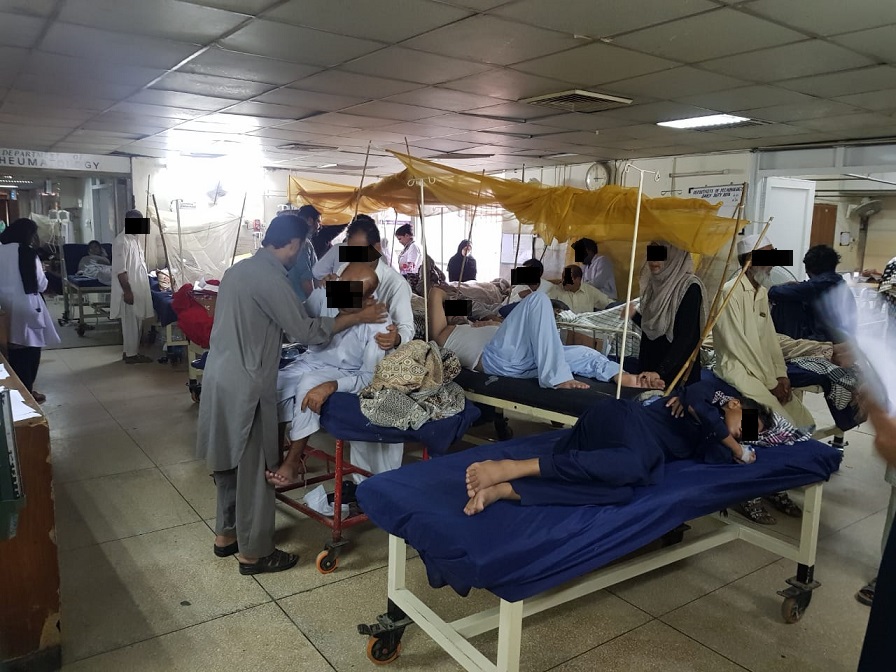Dengue Fever was previously (and even now) known for the classic symptoms of high-grade fever with severe body aches.
The term “Bone-Breaking Fever” was derived because of the severe pains associated with it.
However, with each epidemic, patients who get infected, acquire life-long immunity to one strain but at the same time become more hypersensitive to the other strains.
Thus, patients who are hypersensitive to one strain i.e. patients who were infected previously, tend to develop more severe symptoms.
Physicians must understand the difference between dengue fever and dengue hemorrhagic fever which is described as follows.
First, What are the classic symptoms of Dengue fever?
The following are the symptoms of classic dengue fever:
- Fever
- Headache
- Pain behind the eyes
- Joint and muscle pain
- Feeling tired, sometimes for days to weeks
- Rash
- This can be flat or have small bumps.
- It might be itchy.
- A rash is more common in people who have not been infected with a dengue virus before.
- Stomach problems, such as nausea, vomiting, and diarrhea
- Cough, sore throat and stuffy nose – The throat might look red.
- Small purple spots on the skin or bowel movements that look black
- Red eyes
- Swollen glands
Next, What is the difference between Dengue Fever and Dengue Hemorrhagic Fever?
Is it the bleeding diathesis?
Is it the low platelets count?
The answer is “NO”.
The only difference between dengue fever and dengue hemorrhagic fever is the “Capillary Leak” or “Plasma Leak”.
So, Dengue Fever and Dengue Hemorrhagic Fever may have the following things in common:
- Low Platelets count.
- Bleeding tendencies (gum bleeding, nasal bleeding, bleeding in the skin, urine, or from the gut, and life-threatening bleeding in the organs such as intracranial bleeding).
- Skeletal pains
- High-grade fever
- Rash
- Positive serology (Although patients with dengue hemorrhagic fever may have a positive IgG along with IgM and NS1 Ag).
When do you label a patient to have dengue hemorrhagic fever?
The patient is labeled Dengue Hemorrhagic Fever when he/ she develops any of the following features:
- Low Pulse pressure (systolic minus diastolic blood pressure)
- Rising hematocrit
- Fluid in any of the extravascular compartments such as the pleural cavity or peritoneal cavity.
As the fever subsides, plasma leakage occurs resulting in a rise in the hematocrit. At this point, the patient might benefit from colloid solutions such as Dextran and salt-free albumin.
This is followed by the recovery period in which the fluid returns back to the vascular compartment.
The Critical Period??
The Critical period usually starts as the fever subsides. At the same time, the platelets may also start rising.
However, plasma leakage occurs and the fluid starts accumulating in the extravascular compartments of the body.
Thus, patients may develop pleural effusion and/or ascites. Fluid management is very important at this step and the patient might benefit from colloids such as Dextran and albumin.
After exactly 48 hours, the extravascular fluid starts re-entering the vessels.
Thus, patients are prone to develop fluid overload in the recovery phase.
Patients with compromised heart functions, those with renal and liver disease may rapidly go into a state of pulmonary edema and become hypoxemic.
Therefore, the intravenous fluids should be gradually tapered off at this time and maybe totally discontinued.
In conclusion:
Dengue Fever and Dengue hemorrhagic fever are two different spectrums of the same disease. The presence of the “critical period” is the only differentiating feature between the two entities.
Fluid management in Dengue hemorrhagic fever may not be that simple and require strict monitoring to avoid pulmonary edema.

